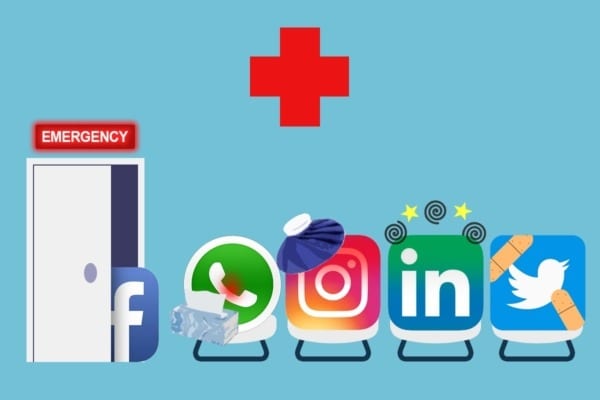If you woke up last week with the urge to log on to your Instagram or Facebook account, whether for business or for pleasure, you may have noticed something strange going on. The loading time was significantly slower, stories weren’t working and photos failed to appear on your feed.
Some of may also have noticed that Instagram wasn’t the only site presenting issues. This past month there were a series of major internet outages that affected billions of users across the earth.
The following companies experienced partial outages this month and last:
There doesn’t seem to be anything that tie these events together, just really unfortunate coincidences.
So What Happened?
On Sunday June 2, a Google Cloud outage eviscerated service for most of the east coast. Third party websites as well as Google’s very own Youtube, Shopify, Gmail and of course Google Drive were also affected.
The cause was a configuration change that was supposed to be applied to a select number of servers in a single region, according to Benjamin Sloss, Google’s Vice President of Engineering. The configuration was incorrectly applied to servers across other regions and congested the network for over three hours.
But wait, that’s not all!
Exactly a month later, Google was hit by another outage due to damage to a fiber cable in the east coast. This one lasted for about six hours. The following day, Facebook, WhatsApp, and Instagram experienced problems when its network went down. And in an ironic turn of events, Facebook decided to notify the public via Twitter of its outage. Hence, why videos and images ceased to load.
Apple iCloud was hit by a three-hour outage that affected the entire United States. App Store, Apple ID, Apple Pay and Apple TV were slow or non-responsive.
What Does This Mean for You?
These Titans of the industry like Amazon, Google and Apple are all susceptible to internal mistakes and error. Google and another company Cloudflare addressed the issues and explained to the public what happened and why. Cloudflare blamed Verizon for their outage. This back and forth led to nowhere. Reports estimate that about 15% all traffic was down because of the cloudflare outage. Other companies like Apple and Facebook did little to explain and acknowledge their outages.
Believe it or not, as of writing this post, LinkedIn has also gone down. People are reporting a logo and a few hyperlinks. Moving to the cloud is still a more secure and more resilient option than running your own servers in-house. We must remember to make decisions not on the exception, but on the rule. These events were anomalies not the standard.
The best thing to do is to not to be too reliant on a single, public cloud service. As digital technology evolves, the world becomes increasingly more networked. It’s important to keep these events in mind and consider developing a contingency plan or a continuity plan in case your business experiences downtime.
Have a Backup Plan in Place
Cloud Service Providers like Nerds Support, assist their partners and clients in creating continuity plans to mitigate issues that arise as a result. If there is anything to be learned from these incidents it’s that no one is immune to disruptions or issues. It’s important to be aware of issues like these and plan accordingly.
Don’t put all your eggs in one basket. In this case, don’t put all data in one public cloud. If you would like to learn more information on the Cloud or have IT related questions, contact Nerds Support or visit our website for more IT related content!



